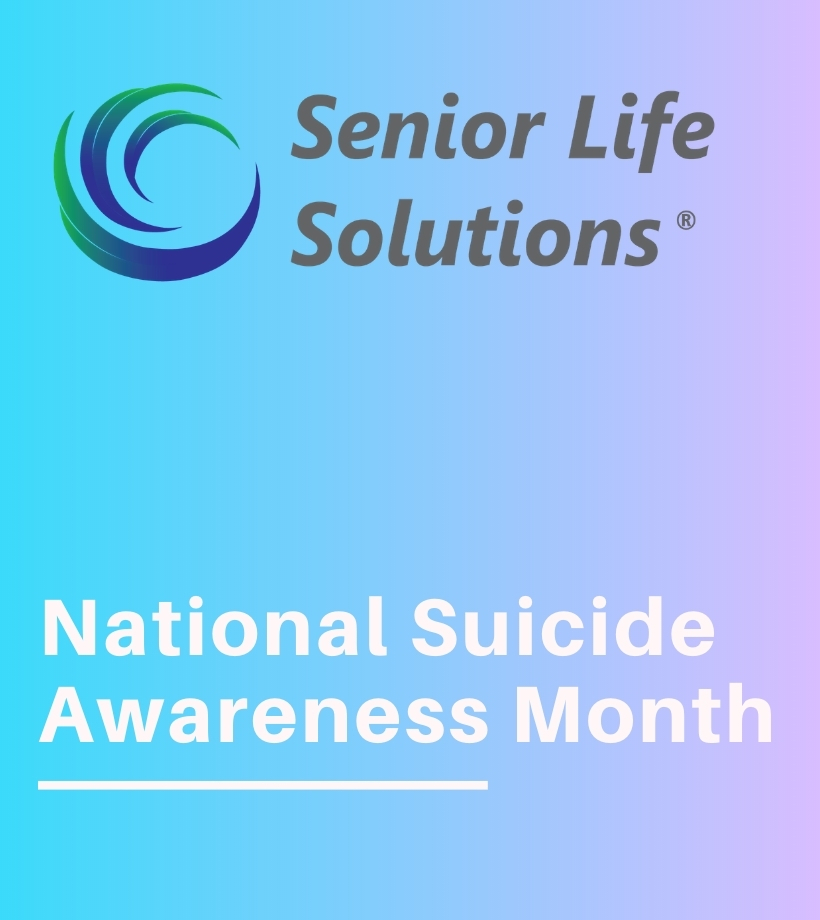DCH Corner – National Suicide Awareness Month
September 4, 2019
September is National Suicide Awareness Month, and all month long we’ll be dedicating our DCH Corner to articles about suicide risks, suicide prevention, and ways you can support loved ones or receive support. These articles will also be archived on our website (www.www.decaturcountyhospital.org).
You can also visit the DCH lobby during the month of September to pick up informational materials about suicide. Please also join us on Thursday, September 12, from 9:30 am – 11:00 am for an open house with our Senior Life Solutions team. The team will be available to answer questions about suicide prevention, have awareness ribbons and beads to recognize those affected by suicide, and more information about our Senior Life Solutions program to support elderly persons in dealing with unique emotions and situations that face us as we age.
For the first article in our series, we are sharing basic information about suicide among seniors, and reasons we are specifically concerned for this age group. This article is published with permission from the Substance Abuse and Mental Health Services Administration (SAMHSA).
Older adults are the fastest-growing segment of the U.S. population (Ortman, Velkoff, & Hogan, 2014). Babyboomers began to turn 65 in 2011. By 2030, the U.S. Census projects that more than 20 percent of the U.S. population—almost 73 million adults—will be 65 or older (Ortman et al., 2014).
Suicide is an important problem affecting older adults. In 2013, 7,215 people ages 65 or older (16.1 per 100,000) died by suicide in the United States, compared to 12.6 per 100,000 among all age groups (CDC, 2013).
Suicide rates are particularly high among older men. While suicidal thoughts and attempts are more common among older women than older men (SAMHSA, 2013), men’s attempts are more likely to be fatal. In 2013, the suicide rate among men ages 65 or older was 30.9 per 100,000—more than six times the rate among women of the same age (4.6 per 100,000) (CDC, 2013). The highest suicide rates in the country are among men ages 85 or older.
A key reason that men’s suicide attempts are more likely to be fatal is that men are more likely to use firearms. In 2013, the vast majority (5,113 of 7,215, or 71 percent) of suicide deaths among older adults were linked to firearms—and men accounted for more than 91 percent (4,666 of 5,113) of such deaths (CDC, 2013). Other lethal means of suicide among older adults include poisoning and suffocation (e.g., hanging).
Older adults are less likely than younger adults to report serious thoughts of suicide or a suicide attempt (SAMHSA, 2013). And yet, suicide attempts are much more likely to result in death among all older adults than among those who are younger. Reasons that a suicide attempt may be more likely to be fatal in this population include the following (Conwell, 1997; Fassberg et al., 2012):
- Older adults plan carefully and use more deadly methods—particularly firearms.
- Suicide attempts by younger people are more impulsive, and they are less likely to use firearms.
- Older adults are more likely to live alone than other age groups and are less likely to be discovered and rescued than younger people.
- Many older adults are physically frail. They are less likely to recover from a suicide attempt than younger people
If you are experiencing thoughts of suicide, reach out to a hotline to talk to a caring, supportive individual. Dial 1-800-273-TALK to be connected.
Next week in our DCH Corner, we’ll provide valuable information on recognizing potential signs of suicidal thoughts, and how to approach loved ones with those signs.
To learn more about Decatur County Hospital, Senior Life Solutions, and all our available services, please visit www.www.decaturcountyhospital.org, or follow us on Facebook @DecaturCountyHospitalIowa.


